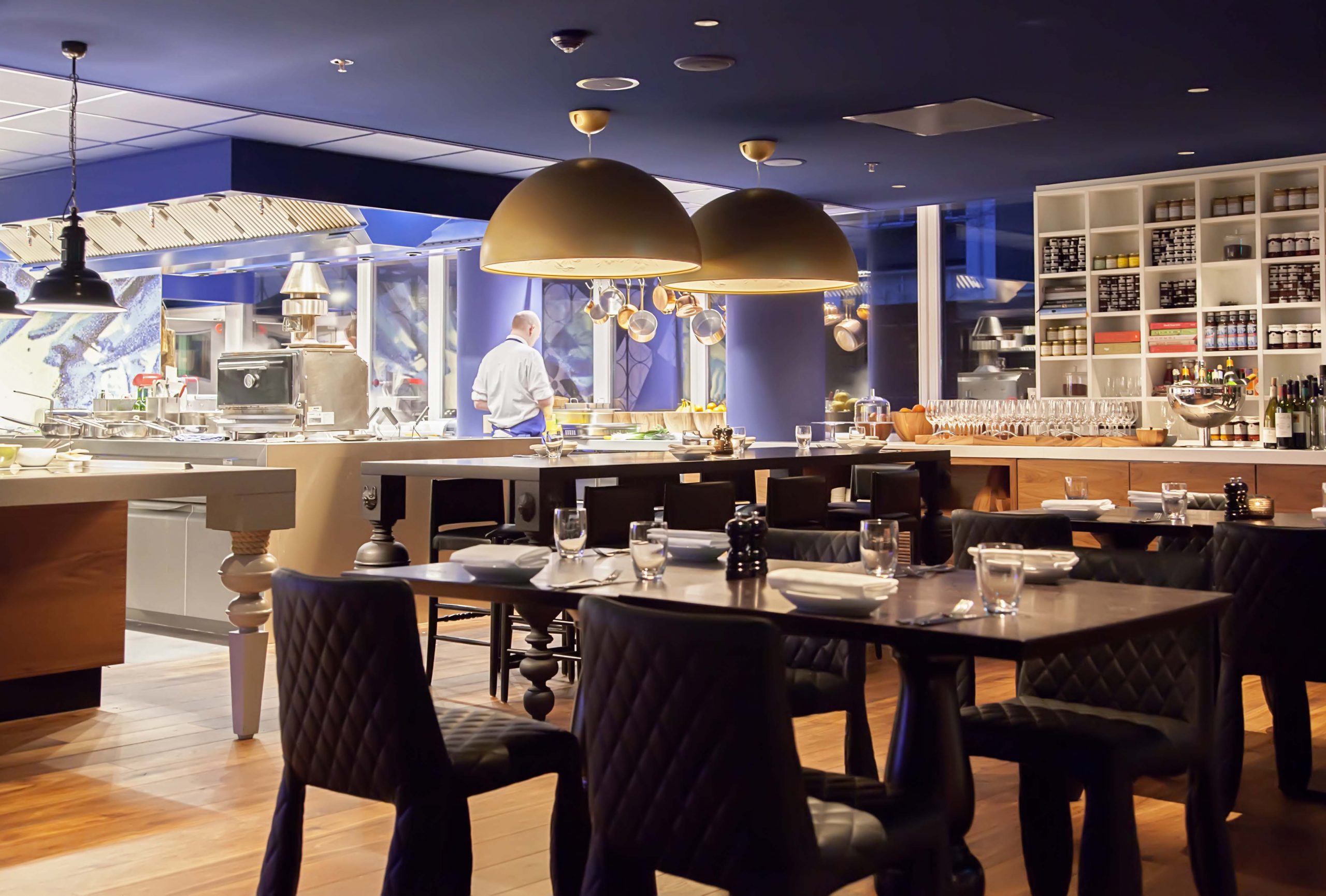

The relationship between restaurant guests and their surroundings is a chicken-and-the-egg kind of thing. In some cases, a restaurant’s design affects what people want to eat and how fast they eat it. Other times, it’s the whims and desires of a hungry public that inspire restaurateurs to embrace new ideas and accommodate changing tastes.
Whatever the motivation, restaurant design is evolving, with technological and cultural shifts shaping how we eat, interact and experience everything—from the seats we sit on to the menus we order from. The results, both financially and aesthetically, are thoroughly exciting.
Fresh from my seat on the front lines of the hospitality industry, here’s an intriguing look at the future of restaurant design trends in 2016.
When restaurants first became popular, the main purpose of eating out was to be served. The closest diners ever came to seeing the chef behind the curtain was the occasional Caesar salad or bananas foster made table-side. These days, though, consumers are obsessed with understanding how food is made, plated and presented.
Just look at Instagram: As of January 2016, there were more than 168 million posts on the photo-sharing platform tagged with “#food.” That fanaticism foodies have for watching cooks at work is leading to more open kitchens, cook’s tables, sushi/diner-style counters and so on.
Bars and restaurants are now being designed with Instagram in mind; ringside seating has reached the restaurant industry, and peoples’ need to be a part of the action is having a definite influence on restaurant design.
While some restaurateurs bemoan the current trend toward healthy eats, it’s undeniable that all the gluten-free, vegan, dairy-free, no-white-flour advocates represent a very real change in how our society is eating.
Will diners’ cravings for comfort food like mashed potatoes and a well-seasoned steak disappear anytime soon? Not in my opinion, but the popularity of high-quality vegetables and produce-heavy menus is still strong enough to have restaurants rethinking both their menus and back-of-house footprints accordingly. I’ve seen deep fryers swapped out in favor of a sous vide machine and watched as design teams ditched the expected mega-freezer in favor of more space for vegetable storage or a row of juicers.
It’s all about adapting from what we in the industry are used to in order to be prepared for what we can see coming next.
In May of 2016, Wendy’s CEO, Todd Penegor, confirmed that the fast food chain intended to respond to rising labor costs by offering self-serve kiosks in some of its stores. While it’s still too soon to see what real-world consequence these kiosks will have, the interest in automation in quick-service restaurants continues to grow.
Today it’s a kiosk in a burger joint, but tomorrow we might have tablets instead of wait staff in fine-dining restaurants (iPads are already standing in for some menus and POS systems) or automated mechanical cooks taking charge in the kitchen.
Customers expect to find Wi-Fi in most eateries these days, but a growing number of outlets are going one step further by incorporating USB charging stations into their restaurants’ designs. While those seats may be in demand among the app-loving crowd, restaurants are also finding ways to please customers looking for a little less connectivity by denoting special areas as device- and TV-free zones.
We might not be quite as obsessed with the provenance of our chicken dinner as we once were, but farm-to-table dining and sustainable sourcing are still hot topics, and we can expect those ideas to continually be incorporated into restaurant design.
Imagine chalkboard menus that change daily; a wall proudly exhibiting the current list of local meat, dairy and produce purveyors; and integrated prep areas that display a cornucopia of fresh seafood and veggies.
“Going green” is attractive to restaurateurs for two reasons: customers like the idea, and becoming more energy efficient can actually save restaurants money in the long run. LED lighting alone can help cut utility bills, lessen the restaurant’s environmental impact, and lower labor costs thanks to LED’s reputation as a practically maintenance-free product.
In addition to ENERGY STAR-rated equipment, more adventurous entrepreneurs are starting to experiment with installing solar panels, in-house composting units, and systems to filter and carbonate their own water.
In the end, built-in USB ports and digital sommeliers are intriguing, but it’s great food, a welcoming and interesting atmosphere, and that restorative sense of community that will keep people coming back. By straddling the line between hospitality and high tech, you can design a restaurant that’s both special and successful.
Keep up with the latest bar and restaurant management trends by subscribing to the blog, below.
